Key Fact
The software needed to allow the operator to control all aspects of a Parker Compax3 drive and MH series 10000rpm motor.

Testimonials
“The system ensures a level of quality control that is required by a modern Aerospace company.”
Understand
The customer is one of the world’s leading Aerospace companies, specialising in actuator and motor systems for a range of aircraft.
They approached TBG with the requirement to convert an existing manually controlled friction brake test system into a software controlled automated test system, critical for testing aerospace grade units. The software needed to allow the operator to control all aspects of a Parker Compax3 drive and MH series 10000rpm motor.
Initially, the customer was told by other integrators that this would not be possible. However, the experience of TBG Solutions and our capabilities gave us the confidence that this could be done and not only could we produce the software in house, but also make use of our in house mechanical and electrical expertise to make changes to the inner workings of the test rig to allow for full control in software.
Engineer
The Solution
The solution is a bespoke LabVIEW application that allows for full control of the motor drive as well as a profiling application to allow for automation and sequencing of ramp rates and dwell times, to fulfil the critical test specification of the UUT.
We were able to make use of the LabVIEW IDE and its prebuilt functions for serial RS232 communications to build a OOP based HAL for the Parker Compax3 Motor Drive. This provides flexibility and scalability for communication between multiple systems and different motors.
Feedback from this Parker Compax3 motor is also displayed on COTS indicators showing the speed and torque on the shaft and UUT. The system itself connects via RS232 to a laptop within a rugged Pelican case designed and manufactured in house by TBG solutions to the highest standards. A basic system overview can be seen in Figure 1.
The Application
The application makes use of the OOP programming architecture. This coupled with TBGs own OOP based QMH design pattern allows for a scalable application architecture where events and error handling are organised and reliable.
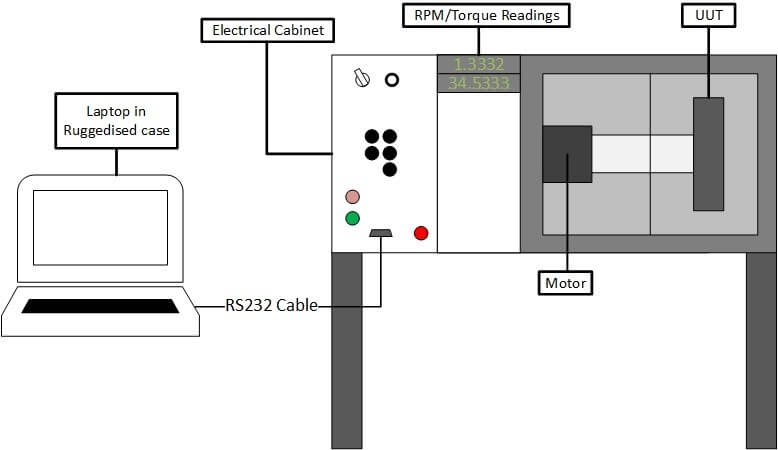
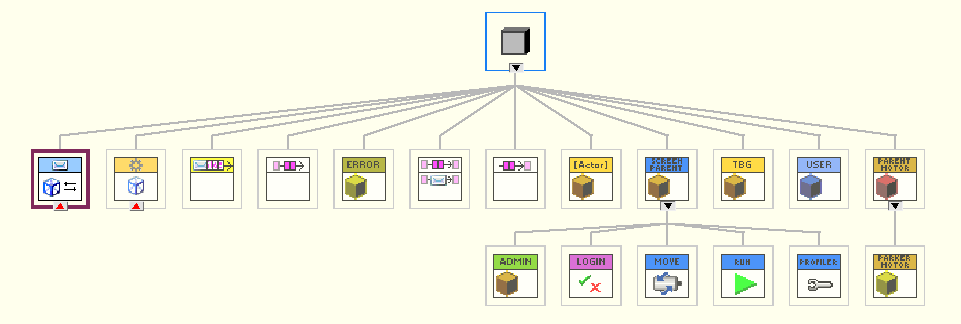
Communications
The key challenge in this project was working to ensure that we could achieve stable and reliable communications with the 3rd party device. Due to there being no driver being provided by the manufacturer, TBG had to revert to using our experience in driver production as well as the comprehensive serial communication user manual for the motor drive. The driver created is the first of its kind for the Compax3 series of motor drives. LabVIEW’s acceptance of a HAL environment means that the software is scalable to multiple test sets and can be transferred over to other motors and drives in the Parker portfolio. The HAL based driver set for the motor drive handles all initialisation, read/write, error handling and shutdown controls for the motor drive. An example of the read-write code can be seen in figure 2.

User Interface
The User Interface of the application can be split into 4 discrete parts which are:
· Main Interface – This the main launcher where a user can select different screens dependent on their requirements such as the profile editor, manual control or even user management. All buttons are enabled/disabled based upon the user’s credentials (i.e. admin, engineer or operator).
· Profiler – This is where the user can create or edit a test profile for UUT testing. They have full control over adding and removing steps. When adding steps, they can ramp up, ramp down, dwell or stop. The add step popup will dynamically change the available step options based upon the step chosen. The options include direction, acceleration and speed.
· Run Profile/Test – This is where a profile can be loaded and run, and in turn, commands sent to the motor drive to test a UUT (as seen in figure 5).
The user can see the loaded steps of the profile and can set the system to run multiple cycles of the same test whilst viewing critical data such as motor temperature and voltage via an asynchronously loaded status monitor, as seen in figure 6.
· Manual Control – As well as automating the test procedure, the user may require manual control of the motor to debug a potential issue with the UUT or run the UUT to a high speed with maximum control. This is done via a dedicated manual control screen (as seen in figure 7) which utilises the same HAL based commands to the motor drive. The screen is constantly monitoring interlock and e-stop conditions to ensure that operation can’t take place whilst a guard door is open or when the system is in an E-Stop situation. The user is granted full control of direction, ramp rate and speed with this screen whilst again making use of viewing critical data in the status monitor.
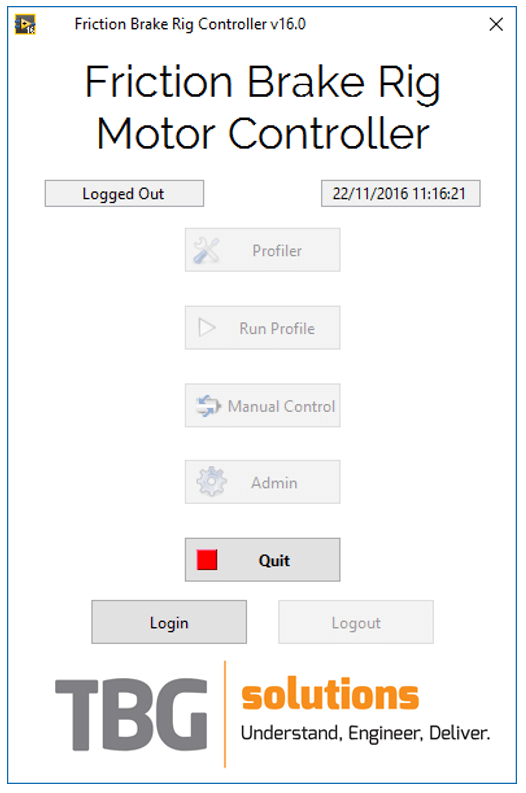
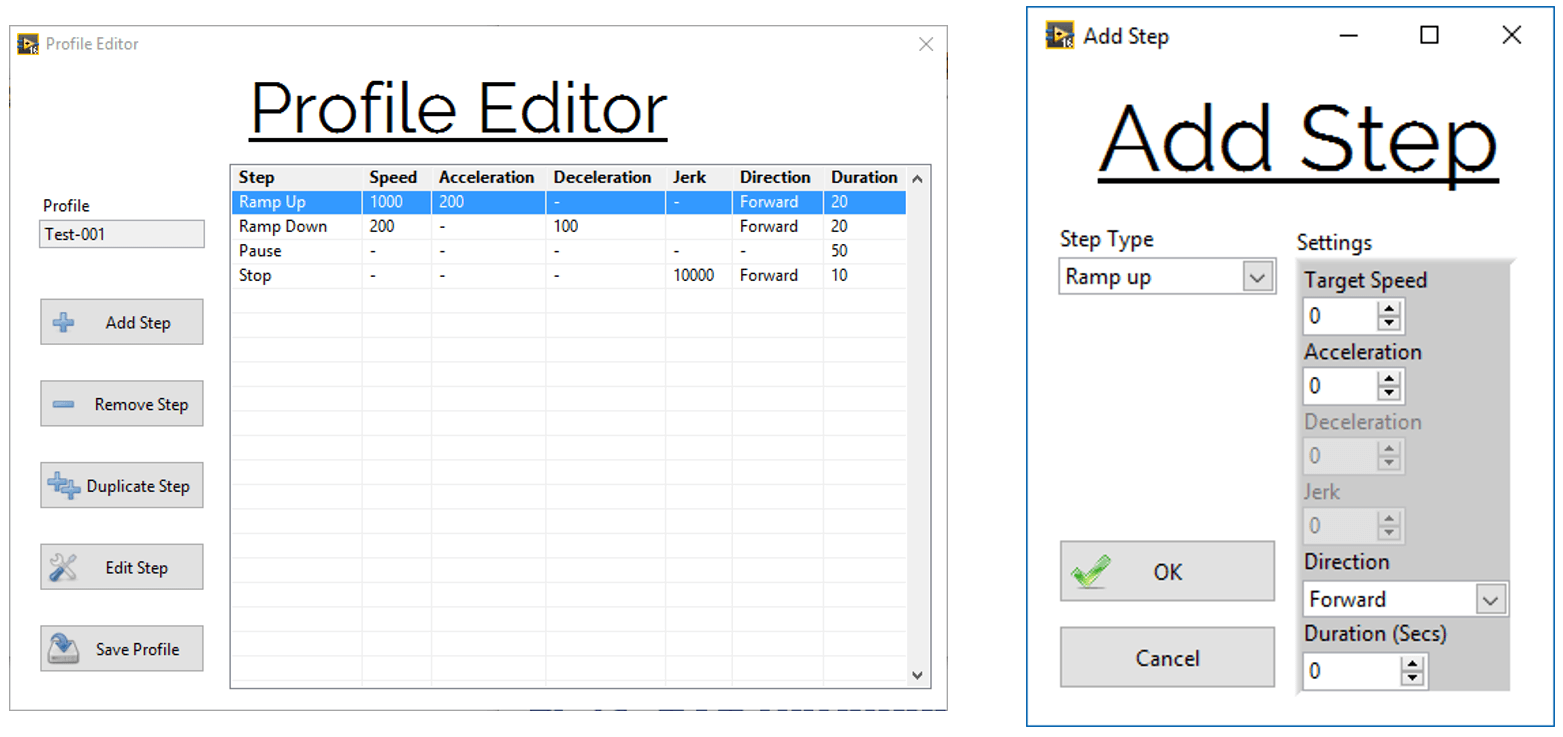
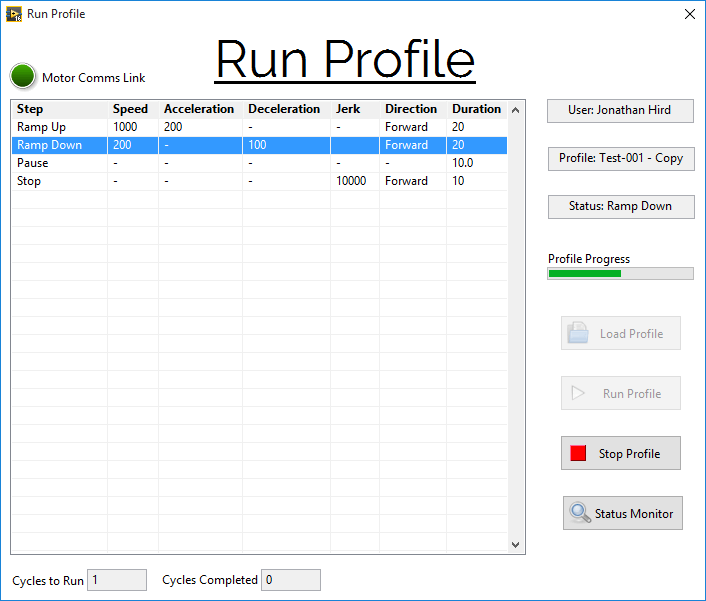
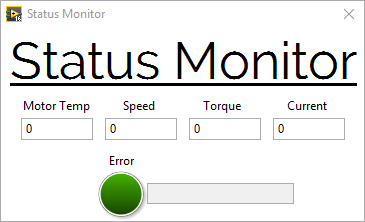
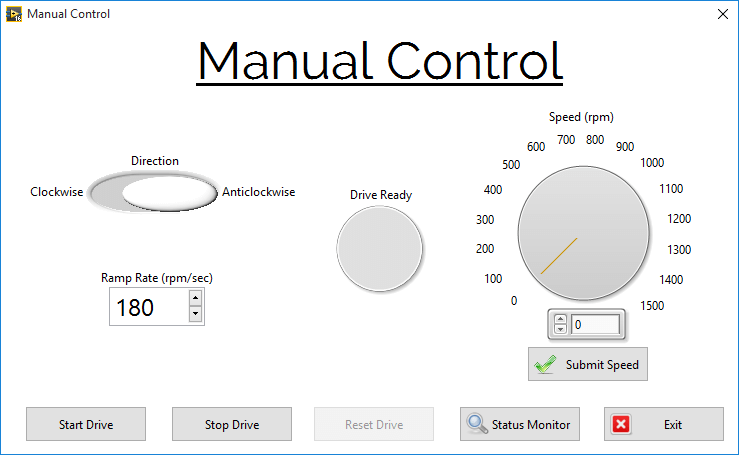
Deliver
Since delivery, the system has tested hundreds of units and runs daily with the customer reporting good feedback on the usability and reliability of the system, keeping them on track in terms of units tested and keeping them at the forefront of the aerospace industry. The use of the LabVIEW OOP capabilities allowed us to create an application that not only exceeds customer expectations but also allows for a fully scalable design architecture which serves as a base foundation for further systems and other projects.

